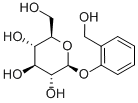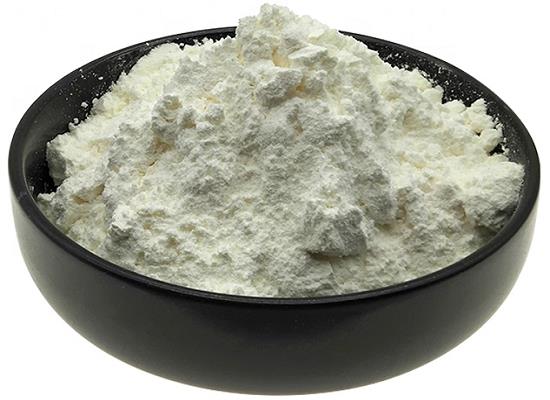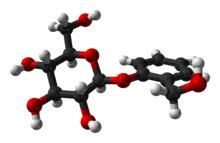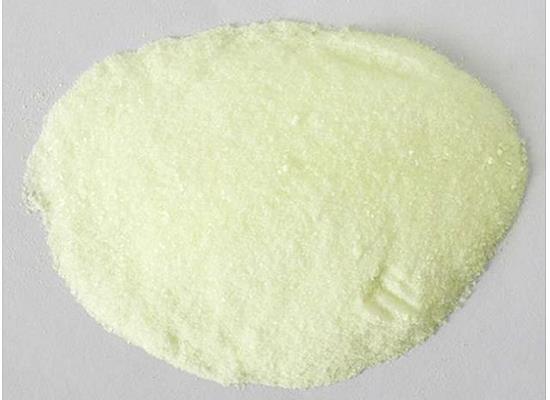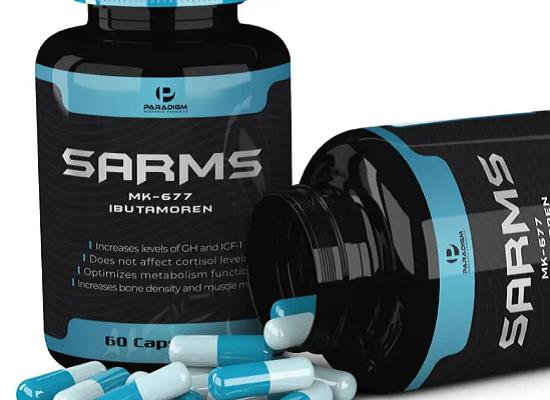D(-)-Salicin:anti-inflammatory, purgative and analgesic agents
D(-)-Salicin, an organic compound with the chemical formula C13H18O7, extracted from white willow bark, is a glycoside compound. White willow bark extracts are standardised to salicin, which has been used for thousands of years as an anti-inflammatory, purgative and analgesicagents[1]. D(-)-Salicin has now been found to be widely present in the bark and leaves of a wide range of willow and poplar plants, e.g, purple willow bark contains up to 30% salicin. White willow bark extracts are commercially available in various grades and compositions, e.g. 15, 25 or 50 per cent salicin. Historically, white willow bark has been used for more than 2,000 years, initially in Egypt and Greece, then in China, Europe, North and South America, the Caribbean and the Mediterranean[2]. D(-)-Salicin has been found to have analgesic and anti-inflammatory properties as well as slowing down skin ageing.
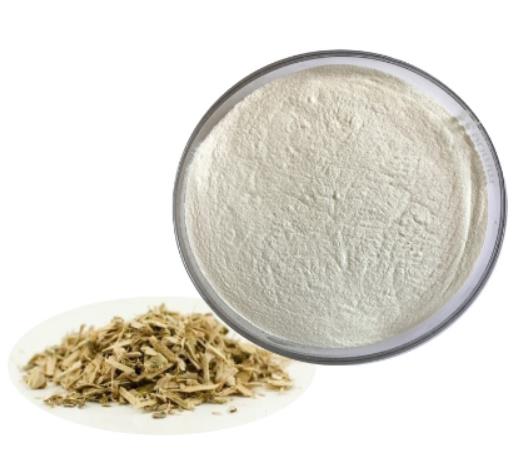
Figure 1. D(-)-Salicin
Physical Properties
It is colourless crystal or white powder, soluble in water, soluble in boiling water, insoluble in ethanol (1:90), insoluble in ether or chloroform, but soluble in alkaline solution, pyridine or glacial acetic acid with hygroscopic properties[3].
Pharmacological effects
1, Analgesic and anti-inflammatory activity of D(-)-Salicin
The use of white willow bark extract for the treatment of pain and fever was first reported in England in 1763. White willow bark extract has also been widely used to treat conditions such as joint or knee pain, acute low back pain, osteoarthritis, headaches, menstrual periods, tendonitis, and flu symptoms including fever and generalised pain. Although no studies have been published specifically regarding the beneficial effects of white willow bark extract, it has been used in exercise and weight loss products because of its possible anti-inflammatory and analgesic effects[4]. In conclusion, the results of the current study suggest that white willow bark extract has analgesic and anti-inflammatory activity.
2, Delay skin aging
White willow bark extract standardised substance D(-)-Salicin is known as a natural aspirin, with a gentle removal of dead skin cells on the surface of the skin, accelerating the efficacy of aging skin cell shedding; but also able to regulate the skin stratum corneum, so that the skin smooth and delicate, even and glossy skin tone; but also to enhance the vitality of epidermal cells to promote the renewal of tissues, improve the skins immunity to prevent inflammation of the skin, increase the skin's resistance to the external bacterial erosion, and repair damaged skin. Repair damaged skin, so that the dark rough skin again 3 now luster. In addition, D(-)-Salicin can be converted into salicylic acid in acidic medium, which is a natural extract ingredient with remarkable effect of removing dead skin, suitable for acne-prone and sensitive skin, used for acne prevention and anti-acne and reducing swelling and pain[5].
3, The inhibitory activity of COX
Mechanism
1, Analgesic and anti-inflammatory activity of D(-)-Salicin
In recent years, various in vitro and animal studies have demonstrated that the anti-inflammatory activity of white willow bark extracts is associated with down-regulation of tumour necrosis factor α (TNF-α) and nuclear factor kB (NF-kB)[6]. Although extracts of white willow bark are standardised usually to D(-)-Salicin, the extracts include other components such as salicylates, polyphenols and flavonoids, which can also play a key role in therapy. Compared to NSAIDs, which include aspirin, white willow bark extracts have relatively few adverse effects. In addition, the commonly used clinical dose of D(-)-Salicin in white willow bark extract is 120mg-240mg compared to 500mg for aspirin, which is lower than the dose of aspirin. This difference may be due to the beneficial effects of polyphenols and flavonoids contained in white willow bark extract. In recent years, a series of in vitro studies have evaluated the graded mechanisms of action of white willow bark extracts. The findings suggest that white willow bark extract down-regulates pro-inflammatory factors such as TNF-α, COX-2 and NF-kB. These findings are consistent with what is known about anti-inflammatory and analgesic mechanisms. As far as safety is concerned, allergic reactions are rare but do occur, and white willow bark extract should be avoided in patients who are allergic to salicylic acid. Although the risk of ulceration and bleeding due to salicylic acid is theoretically present, there are no records or reports of adverse reactions. The reason for the absence of these adverse reactions may be due, on the one hand, to the fact that there are other components in the white willow bark extract that act as antioxidants and tissue protectors in addition to D(-)-Salicin analogues[7]. For example, the antioxidant and free radical scavenging properties of various polyphenols and flavonoids in white willow bark extracts are well known. On the other hand, it may also be related to the low clinically used dose of white willow bark extract.
2, Retardation of skin ageing
D(-)-Salicin exerts skin ageing-delaying effects through increased FOXO expression, increased autophagy levels and resistance to redox reactions.
Adverse Reactions
People with gastritis, stomach ulcers, diabetes, asthma, or haemophilia should avoid using willow bark extract. In addition, willow bark may interact with anticoagulants (increasing the risk of bleeding), beta-blockers and diuretics (decreasing the effect of the drug), and NSAIDs (increasing the risk of stomach bleeding). In addition, white willow bark extract should not be used in children under the age of 16, as it may cause Reye syndrome. Again, the most serious adverse reactions are allergic reactions in individuals allergic to aspirin and salicylates[].
Synthesis
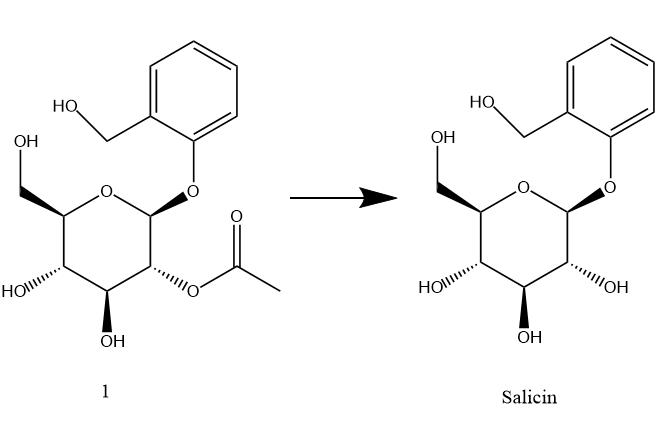
Figure 2. Synthesis of D(-)-Salicin
Acetylated glucoside 1 (0.120 mmol) was dissolved or suspended in MeOH (6 mL) and solid NaOMe (5 mg) was added. The reaction mixture was stirred at RT (~20°C) for 2 h. The reaction mixture was neutralised by the addition of cation exchange resin KU-2-8, filtered off the cation exchange resin and washed with MeOH (30 mL). The methanol solution was concentrated under reduced pressure and dried in vacuo to yield D(-)-Salicin.
References
[1]Willow Bark. In:Drugs and Lactation Database (LactMed?). Bethesda (MD): National Institute of Child Health and Human Development; August 16, 2021.
[2]Oltean H, Robbins C, van Tulder MW, Berman BM, Bombardier C, Gagnier JJ. Herbal medicine for low-back pain.Cochrane Database Syst Rev. 2014;2014(12):CD004504. Published 2014 Dec 23. doi:10.1002/14651858.CD004504.pub4
[3]Shara M, Stohs SJ. Efficacy and Safety of White Willow Bark (Salix alba) Extracts.Phytother Res. 2015;29(8):1112-1116. doi:10.1002/ptr.5377
[4]Oketch-Rabah HA, Marles RJ, Jordan SA, Low Dog T. United States Pharmacopeia Safety Review of Willow Bark.Planta Med. 2019;85(16):1192-1202. doi:10.1055/a-1007-5206
[5]Wick JY. Aspirin: a history, a love story.Consult Pharm. 2012;27(5):322-329. doi:10.4140/TCP.n.2012.322
[6]Cavkaytar O, Arga M. NSAID Hypersensitivity in the Pediatric Population: Classification and Diagnostic Strategies.J Asthma Allergy. 2022;15:1383-1399. Published 2022 Sep 28. doi:10.2147/JAA.S267005
[7]Tawfeek N, Mahmoud MF, Hamdan DI, et al. Phytochemistry, Pharmacology and Medicinal Uses of Plants of the GenusSalix: An Updated Review. Front Pharmacol. 2021;12:593856. Published 2021 Feb 12. doi:10.3389/fphar.2021.593856
[8]Juurlink BH, Azouz HJ, Aldalati AM, AlTinawi BM, Ganguly P. Hydroxybenzoic acid isomers and the cardiovascular system.Nutr J. 2014;13:63. Published 2014 Jun 19. doi:10.1186/1475-2891-13-63
You may like
Related articles And Qustion
Lastest Price from D-(-)-Salicin manufacturers

US $1200.00-1100.00/ton2025-10-15
- CAS:
- 138-52-3
- Min. Order:
- 1ton
- Purity:
- 99%
- Supply Ability:
- 1000T/M

US $690.00/g2025-06-01
- CAS:
- 138-52-3
- Min. Order:
- 1g
- Purity:
- 99 %
- Supply Ability:
- 5000 Kg
